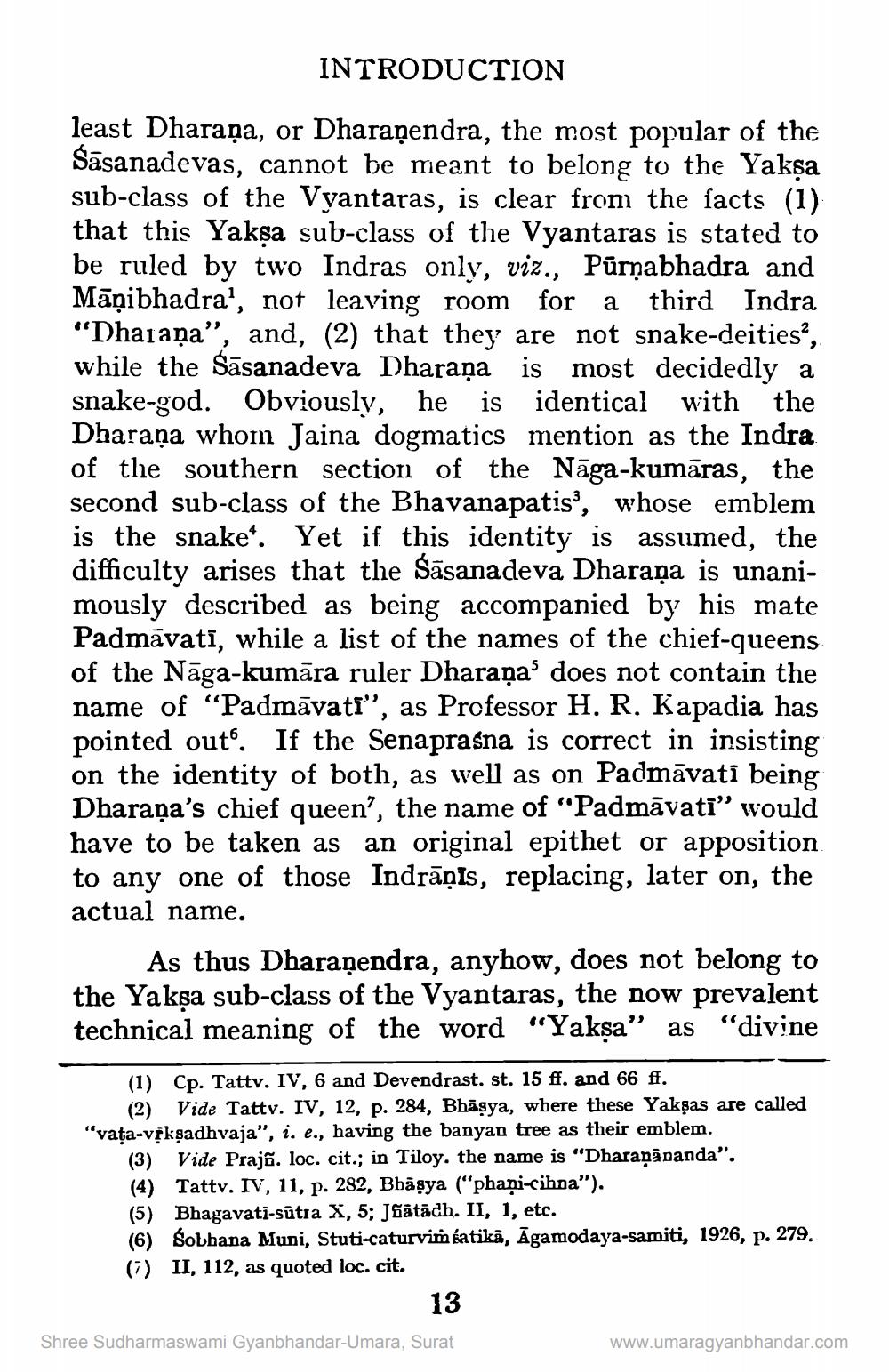________________
INTRODUCTION
least Dharaṇa, or Dharañendra, the most popular of the Sāsanadevas, cannot be meant to belong to the Yakşa sub-class of the Vyantaras, is clear from the facts (1) that this Yakşa sub-class of the Vyantaras is stated to be ruled by two Indras only, viz., Pūrņabhadra and Māṇibhadra’, not leaving room for a third Indra "Dhaiaņa", and, (2) that they are not snake-deities?, while the Sāsanadeva Dharaṇa is most decidedly a snake-god. Obviously, he is identical with the Dharana whom Jaina dogmatics mention as the Indra of the southern section of the Nāga-kumāras, the second sub-class of the Bhavanapatis', whose emblem is the snaket. Yet if this identity is assumed, the difficulty arises that the Sāsanadeva Dharaṇa is unanimously described as being accompanied by his mate Padmăvatī, while a list of the names of the chief-queens of the Nāga-kumāra ruler Dharana does not contain the name of "Padmāvati", as Professor H. R. Kapadia has pointed out. If the Senaprasna is correct in insisting on the identity of both, as well as on Padmāvati being Dharaṇa's chief queen’, the name of "Padmāvatī” would have to be taken as an original epithet or apposition to any one of those Indrāņis, replacing, later on, the actual name.
As thus Dharaṇendra, anyhow, does not belong to the Yakşa sub-class of the Vyantaras, the now prevalent technical meaning of the word "Yakşa” as “divine
(1) Cp. Tatty. IV, 6 and Devendrast. st. 15 ff. and 66 ff.
(2) Vide Tattv. IV, 12, p. 284, Bhāgya, where these Yakşas are called "vaţa-vřksadhvaja", i. e., having the banyan tree as their emblem.
(3) Vide Prajñ. loc. cit.; in Tiloy. the name is "Dharapānanda". (4) Tattv. IV, 11, p. 282, Bhāşya ("phani-cihna"). 5) Bhagavati-sūtra X, 5; Jfåtādh. II, 1, etc. (6) Solbana Muni, Stuti-caturvim katikā, Āgamodaya-samiti, 1926, p. 279. (7) II, 112, as quoted loc. cit.
13
Shree Sudharmaswami Gyanbhandar-Umara, Surat
www.umaragyanbhandar.com




